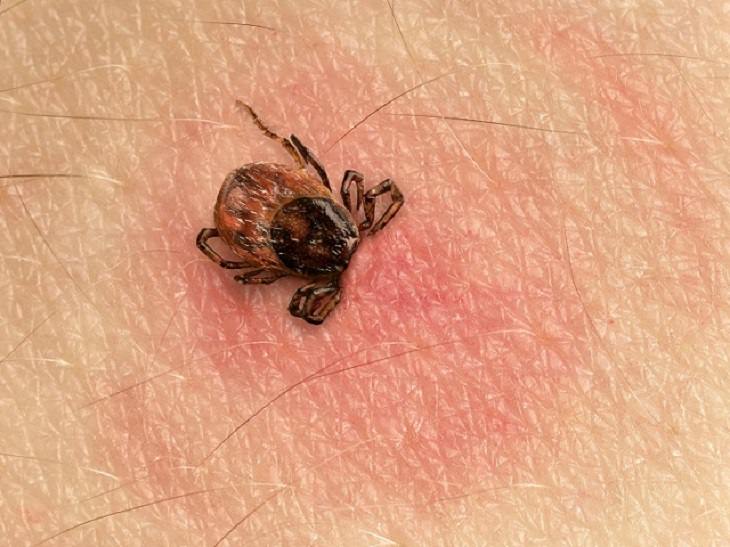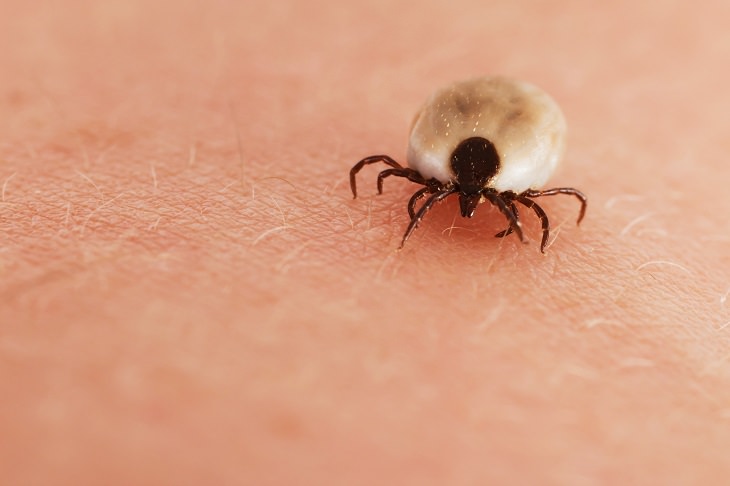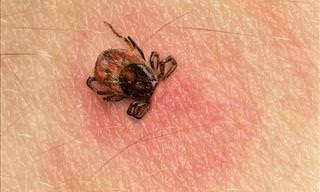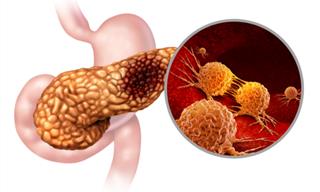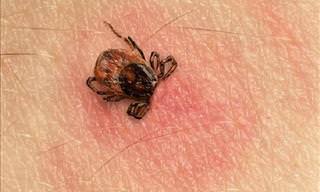As the weather starts to get warmer, there’s only one thing that can hamper our good mood: ticks. These annoying critters love the heat, and if we’re not careful, they can cause us all sorts of harm. They carry a variety of diseases that can cause a range of unpleasant symptoms that can put us down for the count instantly, or even months later.
We’re not trying to freak you out, but, according to the Centers for Disease Control and Prevention (CDC), the number of illnesses being transmitted by ticks, fleas, and mosquitos has tripled in the US, with more than 60% of diseases being caused by ticks. Therefore, it’s good to know what to expect should you get bitten by a tick.
Below are SIX of the top tick-borne diseases that you should know about.
1. Lyme Disease
This is one disease that you’ll want to know the symptoms of so that you can get it diagnosed and treated fast. The longer you go without treatment, the worse it will get. Lyme disease usually starts off with a red bulls-eye-shaped rash that can appear anywhere on the body. It can also cause all sorts of flu-like symptoms such as fever, chills, fatigue, and joint pain.
If left untreated for a prolonged time, you might start to develop sharp, shooting pains in your hands and feet, nerve pain, facial paralysis, an irregular heartbeat, or even inflammation in your brain and spinal cord.
According to the CDC, Lyme disease accounted for 82% of all tick-borne diseases reported from 2004 to 2016, rising from 19,804 cases in 2004 to 36,429 in 2016. A total of 402,502 cases were reported in that span of time. However, it's estimated that nearly 300,000 Americans are infected with Lyme diseases each year. While this disease typically appears in the Northeast and upper Midwest, it has been making its way to other parts of the country.
2. Anaplasmosis and Ehrlichiosis
Both of these tick-transmitted infections cause similar symptoms. These include headaches, fever, body chills, muscle pain, stomach pain, coughing, nausea, and even mental confusion. A rash might also appear, but this is rare. Anaplasmosis is often spread by black-legged ticks, while ehrlichiosis is commonly spread by the lone star tick.
After Lyme disease, this is the second most common tick-borne disease in the US, with around 40,000 cases reported from 2004-2016.
3. Rocky Mountain Spotted Fever
This disease, also known as spotted fever rickettsiosis, starts with cold and stomach flu symptoms such as fever, nausea, headache, vomiting, stomach pain, muscle pain, and a lack of appetite, making it difficult to diagnose. However, once a rash appears, usually 2-4 days after infection, it’s easier to diagnose.
This rash can show up differently for everyone – sometimes it’s red and splotchy, sometimes it looks like pinpoint dots. If it’s not treated quickly, this disease can kill. Therefore, since it's difficult to detect in its earliest stages, it's recommended that you see your doctor if you feel sick after being bitten by a tick, or if you've been hanging out in a wooded or high brush area.
There were 37,000 cases reported between 2004 and 2016. This disease can be found throughout the US, but it's most commonly reported in Arkansas, North Carolina, Missouri, Oklahoma, and Tennessee.
4. Babesiosis
This disease is caused by microscopic parasites that infect your red blood cells, and it's usually transmitted through the bites of black-legged or deer ticks.
The frustrating thing about this disease is that it might not cause symptoms until months after you have been infected. At this point, you could feel rundown with a fever, chills, body aches, sweats, nausea, or fatigue. It can also sometimes cause hemolytic anemia, a rare condition that destroys your red blood cells. This means that it’s especially concerning in those with weak immune systems and other serious health conditions, such as kidney or cancer disease.
In 2004, there were no reported cases of this disease, but this number grew to 1,910 by 2016. While reported cases have steadily increased, there was a slight decrease between 2015 and 2016. Most cases of this disease occur in the Northeast and upper Midwest of the US.
5. Tularemia
This disease is caused by highly infectious bacteria that are transmitted by wood, dog, or lone star ticks.
While there are different kinds of tularemia, the most common ones associated with tick bites are ulceroglandular and glandular. With the former, a painful skin ulcer will appear where you were bitten. This will lead to swelling of certain glands, most commonly in your groin or armpit area. The latter is similar, but it doesn't produce an ulcer. Both forms can cause a fever, which can be as high as 104 degrees.
Thankfully, tularemia is pretty rare, with just 230 cases reported between 2004 and 2016. This disease can be found throughout the US but tends to be more common in central parts of the country.
6. Powassan Virus
This is the rarest of them all, but it’s still one to be wary of. From 2004-2015, there was only one case reported each year, but in 2016, it jumped to 22, the highest that it has been in 13 years.
This disease causes symptoms such as fever, headache, weakness, vomiting, loss of coordination, difficulty speaking, and seizures. These symptoms usually don’t appear until weeks or months after infection. A particularly bad case can cause meningitis and there’s currently no cure or medicine to help.
The majority of cases of this disease occur in the Northeast or Great Lakes regions of the US.
The following video explains how to remove a tick safely, should you ever find one feasting on your blood.
Source: tiphero
Images: depositphotos
 Go to BabaMail
Go to BabaMail


